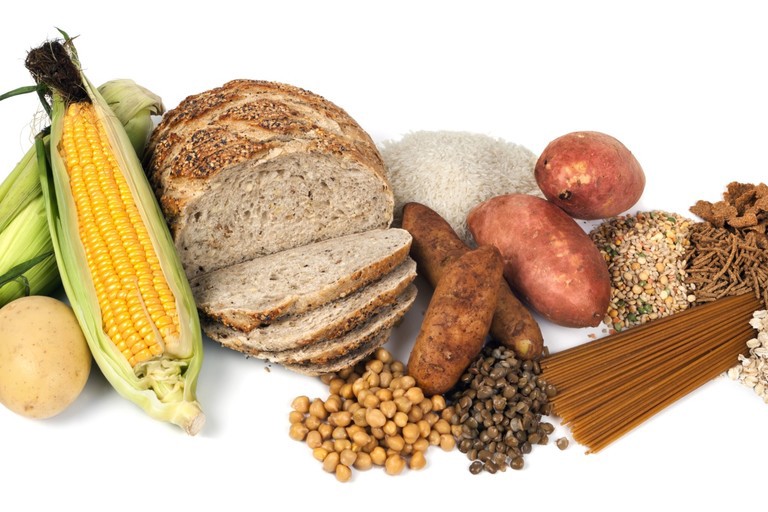Hemorrhoids are a serious condition and when you take into account the pain, tender sensations, excessive itching, and scratching, the condition escalates enough to render you catatonic on a daily basis. Hemorrhoids are also known as piles, which are the swollen veins in the lower parts of the rectum as well as the anus.
All hope is not lost, however, as there are some healthy foods packed with fiber that can lessen the intensity of these symptoms and also prevent the condition.
15 High Fiber Foods To Fight Hemorrhoids
Whole grains
Whole grains are packed with nutrients. They keep their bran, germ, and endosperm, all of which have healthy elements such as fiber. These grains are mainly packed with fiber that is insoluble. This drives digestion, which can reduce discomfort and suffering linked with piles.
Whole grains have a wide variety, which includes bread, barley, whole-wheat flour, quinoa, whole rye, corn, oats, brown rice, and spelt. Oatmeal also works in reducing the symptoms of piles, as it has beta-glucan, a soluble fiber that acts in the manner of a prebiotic as it helps our gut environment by feeding the healthy bacteria therein.
Root vegetables
Root vegetables contain a lot of fiber, around three to five grams per serve. They include beets, carrots, turnips, potatoes, and rutabagas. Tubers also have a lot of fiber in their skins, so that needs to be kept during consumption. Potatoes, specifically those that have been cooked and cleaned, contain a lot of resistant starch. This passed through our tract without being digested and helps our citizens.
Legumes
The Fabaceae family has many plants. Legumes are their seeds which can be had by us. Some examples of the plants that include peas, peanuts, beans, chickpeas, soybeans, and lentils. They are rich with both soluble and insoluble fiber. Anywhere between 21 to 38 grams is an ideal portion for most adults to have daily. Another benefit of legumes is that they can bulk your stool up, thus leading to lesser likelihoods of such pain in the future.
Squash
Few foods are as vibrant and healthy as squash. From zucchini to pumpkin, and yellow, acorn, and butternut squash, there are plenty of varieties too. Acorn squash is the most fibrous, with every cup (~205 grams) having ~nine grams of fiber. Squash can be had in many ways, from roasted to boiled, but the benefits remain the same.
Apples
Apples contain a lot of fiber. One regular apple has almost five grams of fiber. It also has pectin, a soluble fiber that has the structure of a gel. This enables your stool to be softer, thus leading to less pain.
Bell peppers
Bell peppers have an impressive amount of fiber. One cup (~92 grams) has around two grams of fiber. Along with the fiber, they are also very helpful for hydration, another critical aspect of the fight against hemorrhoids. This helps the stool becomes smoother and easier to pass, with no straining.
Artichokes
Artichokes are a fantastic source of fiber. One raw artichoke of medium size (~128 grams) has around 7 grams. Along with some of the foods on this list, artichokes also help feed the healthy gut bacteria. In fact, studies have shown that inulin, a soluble fiber present in artichokes, contributes to the increase in healthy gut bacteria such as lactobacilli and bifidobacteria.
Cruciferous vegetables
Cruciferous vegetables are primarily known for their properties against cancer. However, they also have a lot of insoluble fiber packed in them. Examples such as cauliflower, arugula, turnips, bok choy, radishes, and more, are all under this fact umbrella. Another benefit of cruciferous vegetables is glucosinolate, a chemical in plants that can be broken down by your gut bacteria. These vegetables diversify your gut environment.
Fluids
As mentioned before, hydration is a key aspect of fighting piles. Drinking lots of fluids help make stool softer and therefore, easier to pass. When water is not available or if you want a different fluid source, other low-sugar drinks can suffice. These include clear broths that are low in sodium as well as teas that are either completely unsweetened or mildly sweetened.
Celery
Much like bell peppers, celery not only provide a lot of fiber, it also provides a lot of hydration. A large stalk (~12 inches/30 cms) has one gram of fiber, with 95% of it being water. This means less straining and softer stools. From soups to salads, celery can be had in many forms.
Raspberries
All berries are fibrous to varying degrees. However, raspberries are unique in how much they pack fiber. Just a single cup (~123 grams) has a staggering eight grams of fiber and also 85% water content. Both these elements will make trips to the bathroom much easier.
Prunes
When you are on the search for natural laxatives, look no further than prunes. Just a moderate number of prunes, say 10 on a daily basis, can enhance stool consistency and digestive motility for those who have constipation. Prunes not only have fiber but also sorbitol, which is a kind of sugar alcohol that our intestines do not digest properly. It directs water into the digestive tract, thus making stools softer.
Pears
Pears are a wonderful source of fiber. Take one medium-sized pear and you will be holding almost six grams of fiber, which makes for 22% of the fiber you need daily. It is important to have this with the peel on, as that’s where most of the fiber resides. It also helps that pears can be had standalone or in stews, soups, or salads.
Bananas
Much like apples, bananas also have pectin. They are also high in resistant starch. This combination makes bananas perfect food to lessen symptoms of piles. One banana, around medium size, will give you three grams of fiber. And of course, pectin’s gel-like consistency and resistant starch’s benefits to healthy gut bacteria make it suited to fight the condition.
Cucumbers and melons
The Cucurbitaceae family has both cucumbers and melons. In a similar manner to celery and bell peppers, these two foods are a great way to have both ample fiber and water in the diet. In the case of cucumbers, be sure to have it with its skin to get all the fibrous goodness.
References
https://pubmed.ncbi.nlm.nih.gov/31729708/













